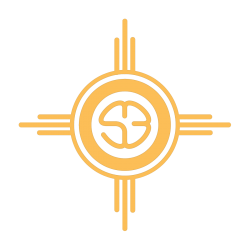Kumeyaay Knowledge and Use of Native Plants Still Vibrant in Remote Baja California
In his new book, Kumeyaay Ethnobotany, anthropologist Michael Wilken-Robertson explores the ancient and ongoing story of Native Baja Californians and the plants they use to make food, medicine, and traditional arts

San Diego, CA—Divided now by a political border that separates north from south, the indigenous Kumeyaay people of San Diego County and northern Baja California have long made their homes in the diverse landscapes of the region, interacting with native plants and continuously refining their botanical knowledge over thousands of years. Anthropologist Michael Wilken-Robertson has spent decades developing friendships and learning from the elders that carry on these traditions in the far-flung ranches of Baja California, working closely with the Kumeyaay in the revitalization of their cultural heritage. The October 2017 release of Kumeyaay Ethnobotany: Shared Heritage of the Californias, which brings together many generations of Kumeyaay traditional wisdom and decades of research by Wilken, begins with a kickoff at the San Diego Natural History Museum on October 17.
Called, “a work of surpassing beauty that meets the highest standards of research scholarship,” by Chumash Ethnobotany author Jan Timbrook, Kumeyaay Ethnobotany provides in-depth descriptions of forty-seven California native plants and their uses. It also includes lively narratives and hundreds of vivid photographs from artist and professor, Deborah Small. The book connects the archaeological and historical record with living cultures and native plant specialists who share their ever-relevant wisdom for future generations.

“Kumeyaay Ethnobotany provides an enduring work that is a gift of history,” says Former Chairman of the Viejas Band of Kumeyaay Indians, Anthony Pico. “Future Kumeyaay generations will look back and know this scientific contribution was very instrumental on our journey toward cultural revitalization. We Kumeyaay are most grateful to Michael Wilken-Robertson’s lifetime work.”
A series of lectures on the work begin with the October 17 “NATtalk” at the San Diego Natural History Museum, which will be followed by a book signing in the museum store. Other public lectures are scheduled at:
- California State University, San Marcos, Tuesday, November 14, 2017
- Anza-Borrego Desert Natural History Association, Friday, November 24, 2017
- Autry Museum of the American West, Saturday, December 9, 2017
